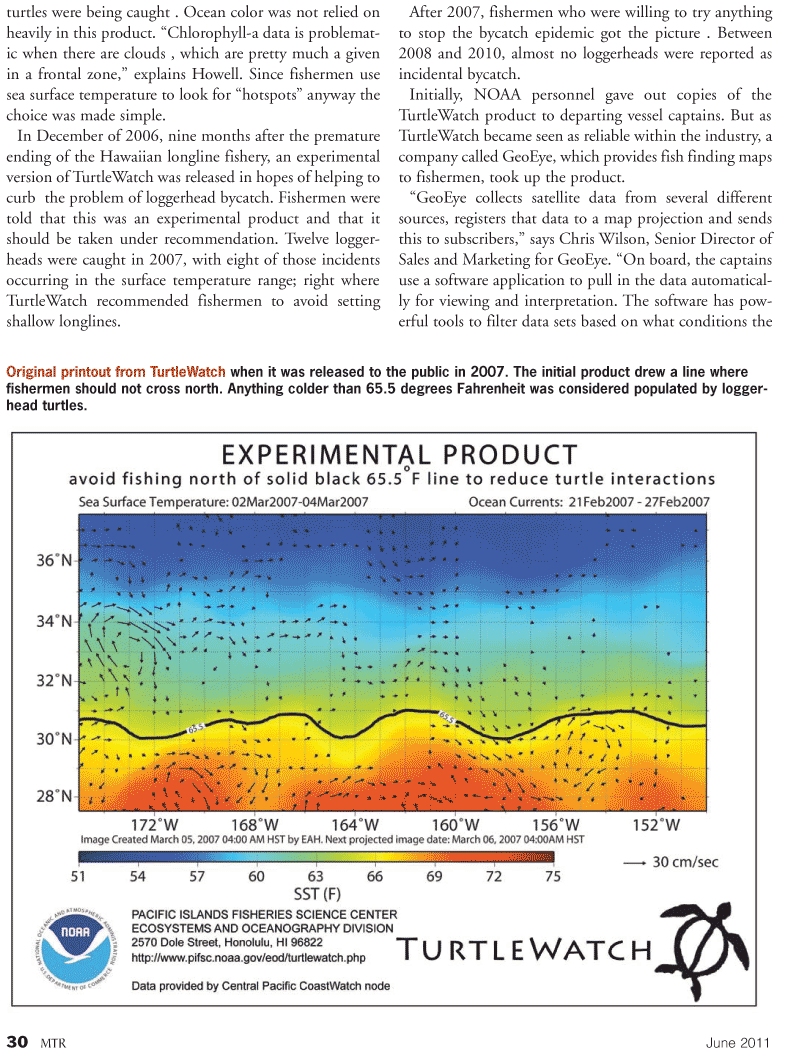
Page 30: of Marine Technology Magazine (June 2011)
Hydrographic Survey
Read this page in Pdf, Flash or Html5 edition of June 2011 Marine Technology Magazine
30 MTR June 2011 turtles were being caught . Ocean color was not relied on heavily in this product. “Chlorophyll-a data is problemat- ic when there are clouds , which are pretty much a given in a frontal zone,” explains Howell. Since fishermen use sea surface temperature to look for “hotspots” anyway the choice was made simple.
In December of 2006, nine months after the premature ending of the Hawaiian longline fishery, an experimental version of TurtleWatch was released in hopes of helping to curb the problem of loggerhead bycatch. Fishermen were told that this was an experimental product and that it should be taken under recommendation. Twelve logger- heads were caught in 2007, with eight of those incidents occurring in the surface temperature range; right where
TurtleWatch recommended fishermen to avoid setting shallow longlines.
After 2007, fishermen who were willing to try anything to stop the bycatch epidemic got the picture . Between 2008 and 2010, almost no loggerheads were reported as incidental bycatch.
Initially, NOAA personnel gave out copies of the
TurtleWatch product to departing vessel captains. But as
TurtleWatch became seen as reliable within the industry, a company called GeoEye, which provides fish finding maps to fishermen, took up the product. “GeoEye collects satellite data from several different sources, registers that data to a map projection and sends this to subscribers,” says Chris Wilson, Senior Director of
Sales and Marketing for GeoEye. “On board, the captains use a software application to pull in the data automatical- ly for viewing and interpretation. The software has pow- erful tools to filter data sets based on what conditions the
Original printout from TurtleWatch when it was released to the public in 2007. The initial product drew a line where fishermen should not cross north. Anything colder than 65.5 degrees Fahrenheit was considered populated by logger- head turtles.

 29
29

 31
31
